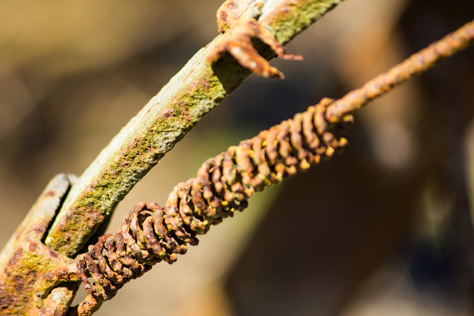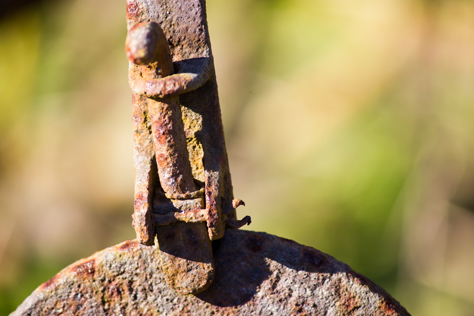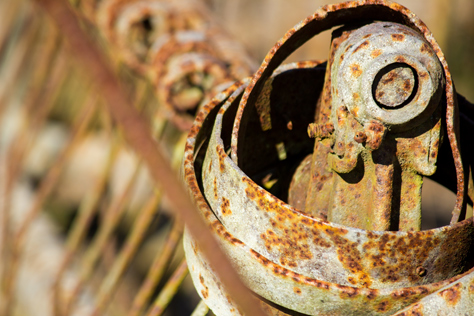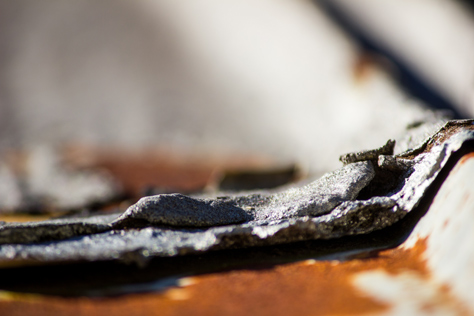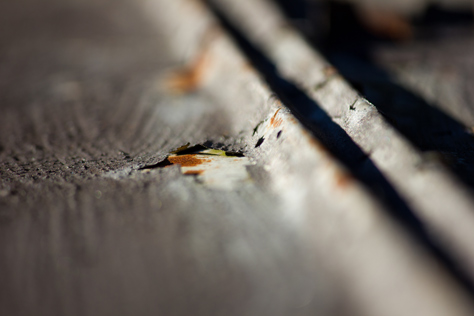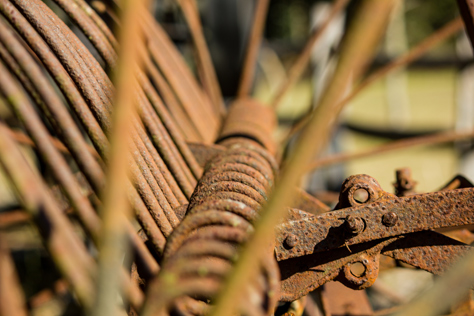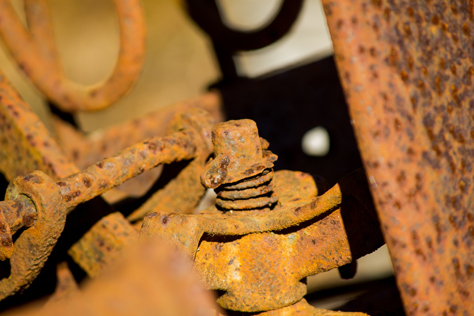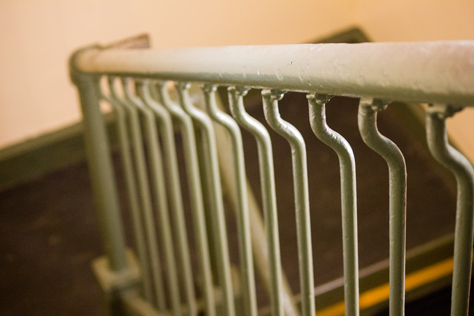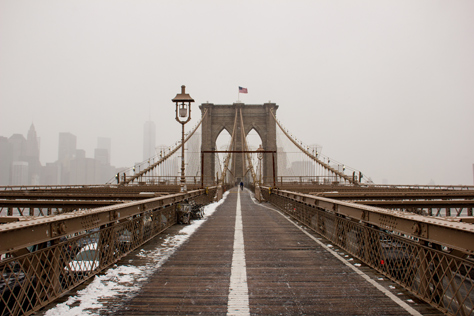
Walking toward the eastern tower of the Brooklyn Bridge (1883) on the pedestrian and cyclist promenade.
Brooklyn Bridge Promenade, Brooklyn, New York: 26 January 2014
part of the Brooklyn Bridge Promenade album
Once I finished exploring Brooklyn Bridge Park (2010) and other locations in the area, it was time to return to Manhattan. Walking south on Washington Street, called Cadman Plaza East south of Prospect Street, I watched some kids sledding on a snowy park hill and then entered the Brooklyn Bridge (1883) Promenade.

When the Brooklyn Bridge first opened in 1883, more than 150,000 people walked across it via the pedestrian promenade. Beyond tourism and photography, the one mile promenade provides a scenic and viable transportation alternative for walkers and cyclists over the East River.

As I began my journey across, the snowfall increased and the strong southwesterly winds made the twenty-one degree air feel much colder. The skyscrapers of Manhattan's Financial District started to vanish, shrouded in low clouds and blizzardy conditions. Few people were around, a bonus for me.
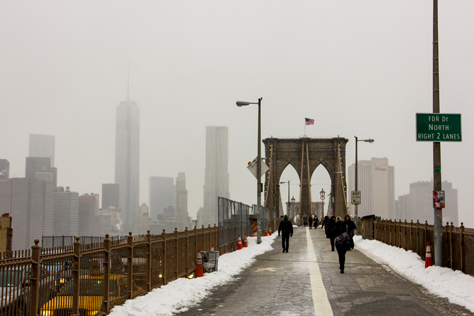
Prior to crossing the East River, the bridge provides views of the Fulton Ferry and Dumbo neighborhoods of Brooklyn. Nearby, the Manhattan Bridge (1909) provides an additional crossing for automobile, subway and pedestrian traffic. It is the third East River bridge, after the Brooklyn and Williamsburg Bridge (1903).
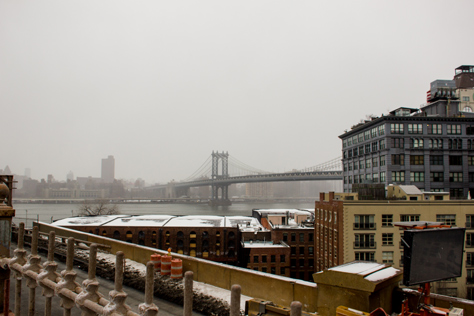
The Brooklyn Bridge was built over thirteen years starting on Monday, 03 January 1870 and first opening on Thursday, 24 May 1883 — nearly 131 years ago. At least twenty men were killed during construction from fires, explosions and caisson disease, what we know today as decompression sickness or the bends.
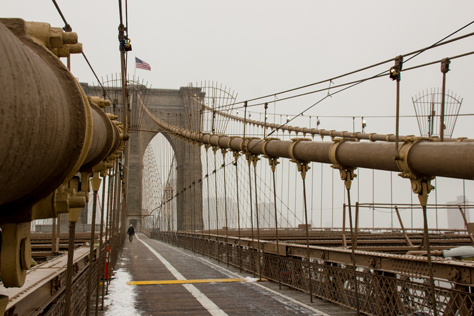
It was designed by John Augustus Roebling (Johann August Röbling, 1806–1869) of Mühlhausen, Kingdom of Prussia. During pre-construction work in 1869, Roebling's foot was crushed between the dock and a ferry. The resultant tetanus infection soon caused death, but after he handed the project's reins to son Washington Augustus Roebling (1837–1926).

Rising 276 feet and six inches above the water, the two neo-Gothic granite arch towers provide the bridge with its signature look. The four main cables, 15.75 inches in diameter, are each comprised of 5,434 steel wires bundled into nineteen strands. Extending from anchorages at both ends of the bridge, the cables form parabolas across the span and pass over saddles within the towers.
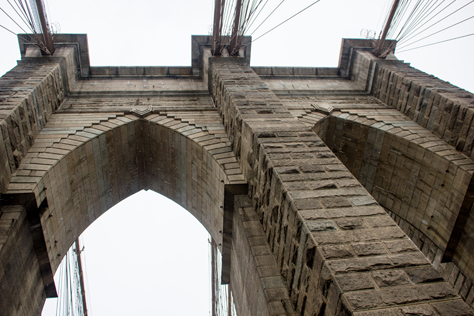
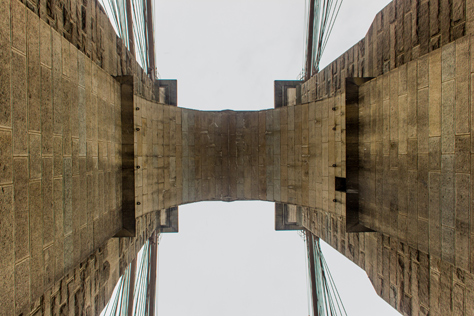
From the eastern tower, there is a largely unobstructed view of Brooklyn Bridge Park and its series of piers; a nice aerial overview of where I had just explored. In the distance lies the confluence of the East River and Hudson River, with Governors Island and the Statue of Liberty (1886) visible — usually more so.
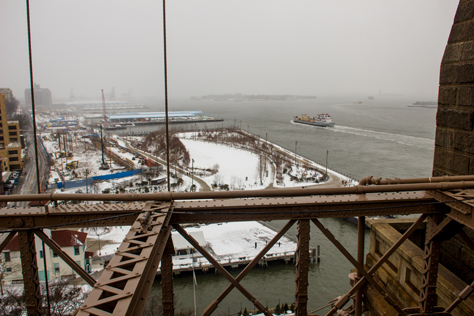
Each tower also has spots where you can stand over and watch the automobile traffic on the level below, originally configured for use by horse-drawn carriages and railcars. According to New York City DOT, more than 120,000 vehicles, 4,000 pedestrians and 3,100 bicyclists cross the Brooklyn Bridge every day.
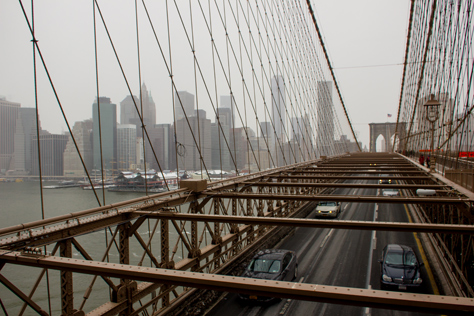
The four main cables are joined by 1,520 suspenders and 400 diagonal stays. White lamps, illuminated even though it was the middle of the afternoon, are spaced out along the tops of the main cables. I did not notice at the time, but my photographs reveal that a number of the lamp bulbs are in need of replacement.
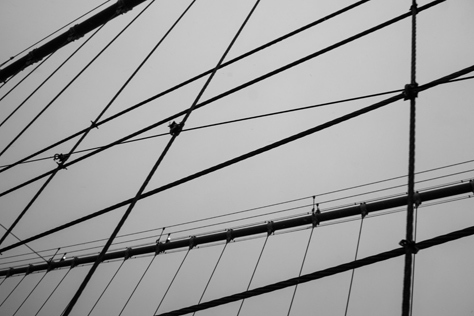
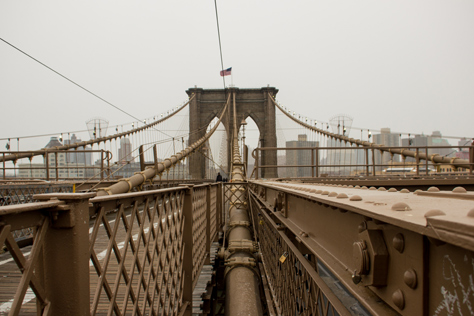
The deck of the promenade is made from 11,000 wooden planks about sixteen feet across and four inches wide. Able to withstand a variety of weather conditions, tropical hardwood with a thirty-year lifespan is used. The Brooklyn Bridge Forest project is working to secure official support for their sustainable replacement plan sourcing from the Uaxactún community forest in Guatemala.
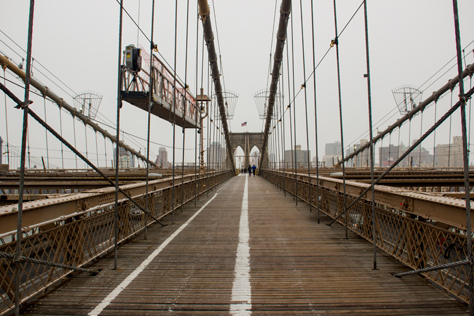
The eastern side of the western tower has the number 1875 displayed near the top. Although I did not see any similar signage on the eastern tower, this corresponds to the year the two towers were completed. An American flag is also displayed atop each of the two towers, replaced about every three months.
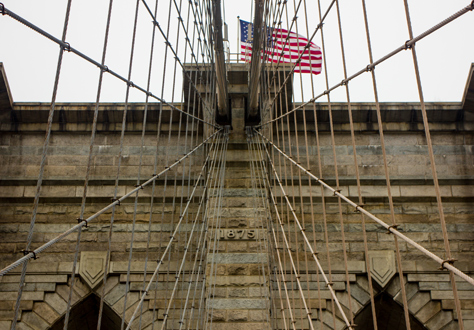
Flags were part of the original 1867 plan but not installed until the early 1900s. The flag's lighting was deemed too costly in the 1930s and so both were removed. Later restored for the 1983 centennial, the twelve by eighteen foot flags are lowered to half-staff for ten days after a city firefighter or police officer is killed in the line of duty, or for thirty days when certain dignitaries die.
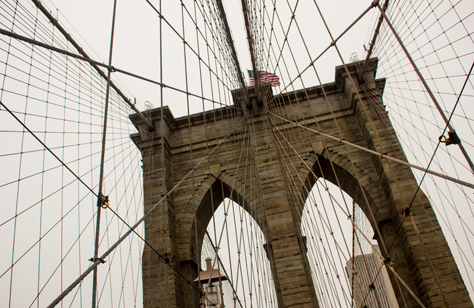
As I got closer to the Manhattan side, the snow and overcast conditions started to diminish. There is an interesting range of classic, mid-twentieth century modern and new structures in the area. The latter end includes 8 Spruce Street (2010) — a 898 unit residential skyscraper with unique architecture — and the nearly complete One World Trade Center (2014), opening this year.
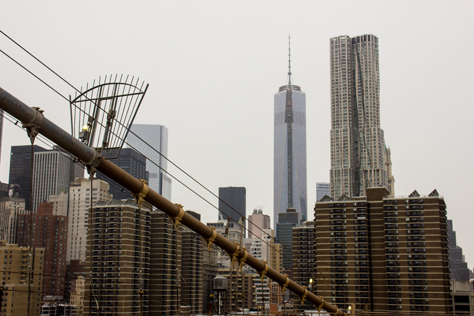
375 Pearl Street a.k.a. One Brooklyn Bridge Plaza (1975) was condemned by many after its construction by the New York Telephone Company for being unattractive and overshadowing the Brooklyn Bridge. Originally a major telephone switching facility known as NYCMNYPS, the thirty-two floor structure still houses three levels of Verizon equipment like digital multiplex switches but the rest of the building is being developed into a co-location data center.
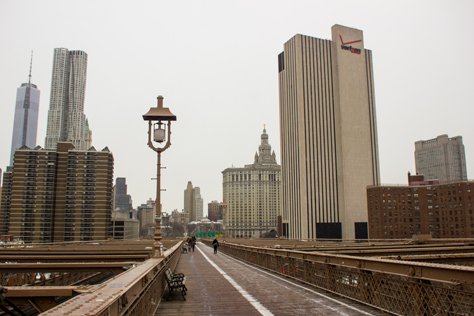
A few hundred yards inland is a far more interesting structure. As early as 1884, the City of New York determined that additional office space was needed. Rental property provided some relief but was inconvenient and expensive, so a commission was appointed in 1888 to study the feasibility of constructing a central, multi-agency facility. The result was the forty floor Manhattan Municipal Building (1914) with twenty-five usable floors plus fifteen more in the tower.
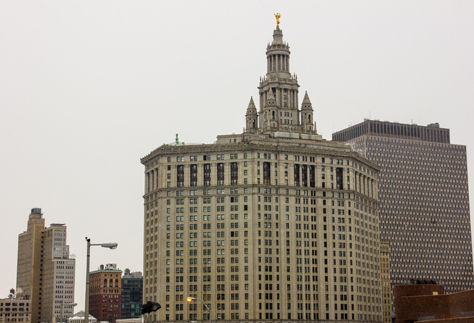
Centre Street marks the terminus of the promenade and bridge, an area usually crowded with tourists, hot dog carts and street vendors. On this winter day, there were no vendors around whatsoever. Even the permanent kiosks like Taqueria Nixtamalito in the adjacent Manhattan Municipal Building plaza were closed.
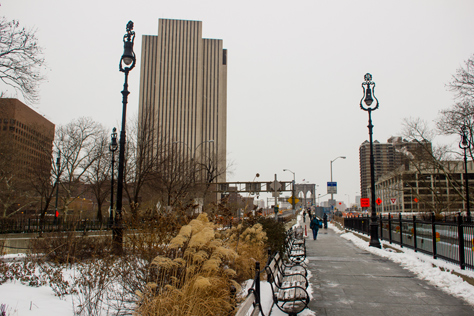
The weather having influenced the speed of my crossing and efficiency in photography, I managed the trip in thirty minutes. My preference would have been to take more time to enjoy the walk, but I really did like that the cold kept most everyone else away. In more temperate weather, the promenade is packed.
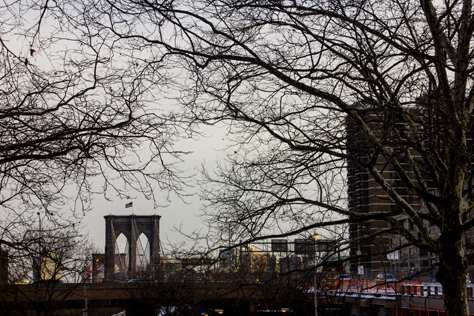
I walked around City Hall Park before finding myself back at the Manhattan Municipal Building plaza. With the benches there barely covered in snow, I took the opportunity to sit, briefly preview my photos and contemplate dinner before entering Brooklyn Bridge-City Hall Station and taking the subway back uptown.
